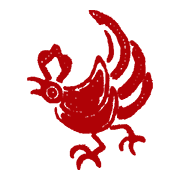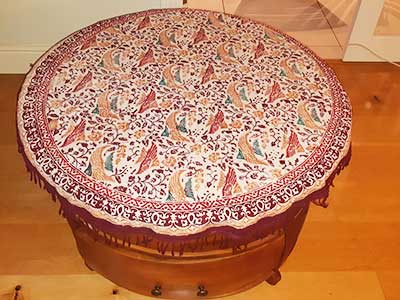 Nawang's Batik Boutique
Nawang's Batik Boutique
Batik is one of the oldest known decorative arts in Asia, and despite being copied in Malaysia and Thailand, it originated in Java.

Batik is hand made material that has patterns dyed into it using age old techniques in which a wax pattern is printed onto the cloth, the cloth is then dyed and the wax washed out. The process is repeated many times using different patterns and dyes to produce intricate colourful designs.
Batik comes in different patterns and colours both traditional and modern, the traditional designs tend to be unique to specific areas of Indonesia.
The coastal batik from Java is one of the best but is seldom seen outside of Java. Our small home-industry venture is now able to bring these pieces to the UK and Europe at affordable prices, whilst helping to support cottage industries in Indonesia.
Nawang and her sister Natasha are two Javanese girls, based in London with family in Java who run a small cottage industry buying and selling some of the best local batik available. Their desire is to make available high quality batiks that would not normally be available outside Java as they do not enter the cheap souvenir category, but the high quality top of the market local quality.
By buying direct from the Pekalongan factories, we are available to offer this quality at affordable prices. This project has as it’s aims to improve income earning opportunities for the cottage industries of Pekalongan craftsmen. By passing on the majority of profit directly, and avoiding any middleman, we hope to show the best of what Indonesia makes at affordable prices.
Javanese batik styles can be broadly divided into Palace Batik (from the Royal Palaces of Yogyakarta and Surakarta), and Coastal Batik.
Coastal batik, however, is the historic batik of ancient sea traders coming to Java to barter commodities from China, Vietnam and the rest of the South China Seas, and developed to be very high quality cloth, practical, attractive and hard wearing.
Palace batik is, in it’s finest art form, hand drawn intricate designs passed on through royal batik artists who draw with hot liquid wax onto cloth which is then ‘resist-dyed’ colour by colour to produce the final design. This technique produces works of art revered and collected by galleries round the world and studied by ethnographic textile students as one of the most intricate and complicated skills to adorn cloth usually made into clothes and now adapted to modern designs by Indonesia’s fashion designers.
Copyright Nawang Batik August 2022